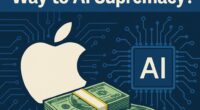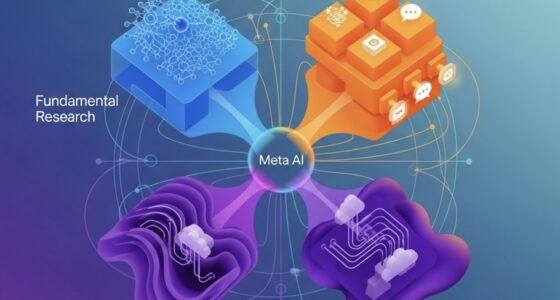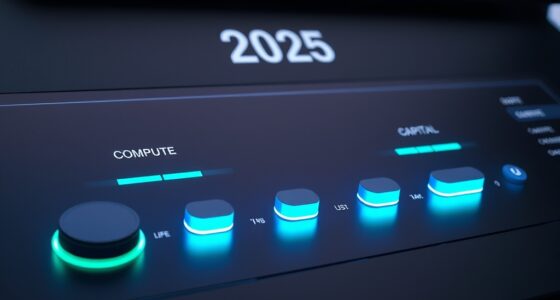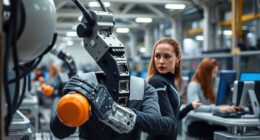Published on ThorstenMeyerAI.com – August 6 2025
Introduction: A Quiet but Significant Release
In the fast‑moving world of artificial intelligence, product launches are usually accompanied by marketing fanfare. Yet Anthropic’s latest update, Claude Opus 4.1, arrived on 5 August 2025 with minimal hypeanthropic.com. On the surface it appears to be a minor revision to the Claude 4 family—but a closer examination reveals that Opus 4.1 marks a meaningful stride in software engineering accuracy, reasoning depth and safety. The release also positions Anthropic strategically ahead of looming announcements from competitors, ensuring its flagship model remains a capable tool for developers and businesses.
This article distills the key improvements of Opus 4.1, situates them within the broader AI model landscape, and considers whether this “incremental” release is simply a stability patch or a harbinger of more transformative upgrades ahead.
From Opus 4 to Opus 4.1: What Changed?
Boosted coding prowess
Perhaps the most headline‑worthy improvement is Opus 4.1’s performance on SWE‑bench Verified, a benchmark of 500 real‑world software engineering tasks. The new model scores 74.5 %, up from 72.5 % with Opus 4 and 62.3 % with the earlier Sonnet 3.7 model9to5mac.com. This places Opus 4.1 squarely above its predecessor and helps it remain competitive against rapidly improving models from OpenAI, Google and Mistral.
But performance numbers alone don’t capture the quality of the improvements. According to GitHub’s evaluation, Opus 4.1 exhibits notable gains in multi‑file refactoring and debugginganthropic.com. This matters because many large‑language models (LLMs) excel at single‑file code generation but falter when tasks span multiple modules or require surgical edits within sprawling repositories. Rakuten Group reports that Opus 4.1 pinpoints precise corrections in large codebases without introducing unnecessary changesanthropic.com—an invaluable trait for enterprise developers who dread code churn and regression bugs. Windsurf, a developer platform, found a one‑standard‑deviation improvement on its junior developer benchmark, roughly equivalent to the leap from Claude Sonnet 3.7 to Sonnet 4anthropic.com. In other words, Opus 4.1 achieves “senior‑level” productivity gains for tasks that previously frustrated less‑powerful models.
Deeper reasoning and research capabilities
Anthropic frames Opus 4.1 as a hybrid reasoning model designed to handle both instantaneous outputs and extended thinking. The update introduces better detail tracking and agentic search, enabling the model to synthesize information across long contexts, track subtle variables and answer questions that require chaining multiple reasoning stepsanthropic.com. For example, Opus 4.1 can wade through thousands of pages of legal documents or patent filings, summarise key provisions, and then propose modifications based on specific criteria—a capability previously relegated to domain‑specialised tools.
Importantly, these reasoning gains come with user control. Developers can adjust the thinking budget—the number of reasoning steps and tokens the model uses—via Anthropic’s APIsearchenginejournal.com. This means teams can tailor the trade‑off between cost and performance, opting for quick answers when response time matters or deep dives when accuracy is paramount.
Expanded use cases and content generation
Opus 4.1’s improvements extend beyond coding and research. Search Engine Journal notes that the model excels in generating more natural writing with improved structure and tonesearchenginejournal.com. Combined with its reasoning skills, this makes the model a valuable tool for drafting business reports, policy analyses and long‑form content—use cases historically dominated by human writers.
Anthropic also emphasises autonomous agents as a future‑oriented use case. Opus 4.1 performs well on the TAU‑bench—a benchmark that measures how effectively models can follow complex agent policies to complete multi‑step taskssearchenginejournal.com. This suggests the model can power AI assistants that plan, execute and adapt strategies across extended horizons, from managing supply chains to conducting market research. As AI agent frameworks mature, these capabilities will become central to enterprise automation.
Safety enhancements and transparency
One area where Anthropic differentiates itself is through explicit safety commitments. Opus 4.1 operates under the company’s AI Safety Level 3 standard and underwent voluntary safety evaluations. The model refused policy‑violating requests 98.76 % of the time (up from 97.27 % with Opus 4) and maintained a low over‑refusal rate of 0.08 % on benign requestssearchenginejournal.com. Evaluations found no significant regressions in political bias, discrimination or child‑safety responsessearchenginejournal.com. Tests of resistance to prompt injection and agent misuse also showed improved performancesearchenginejournal.com.
Anthropic further provides methodological transparency, explaining how benchmarks were conducted. For instance, SWE‑bench Verified tasks rely on a simple scaffold with a bash tool and a string‑replacement file editor; the “planning tool” used in earlier Sonnet versions was removed, and scores are reported out of 500 problemsanthropic.com. This transparency fosters trust and allows researchers to replicate or challenge the results.
Context: The AI Model Arms Race
The release of Opus 4.1 occurs during a period of intense competition in generative AI. In recent weeks, we’ve seen:
- OpenAI’s GPT‑oss models—open‑weight 120 B and 20 B parameter models aimed at the open‑source community, promising near state‑of‑the‑art reasoning capabilities.
- Google Gemini 1.5 Pro—reportedly scoring 92 % on MMLU and emphasising multimodal reasoning.
- Mistral’s Mixtral series—a 45 B token efficient model widely praised for its reasoning cost-effectiveness.
- Apple’s entry into the AI model wars, with speculation about proprietary hardware integration and on‑device inference.
Within this ecosystem, Claude Opus 4 was already considered one of the top performing models for coding and reasoning. Independent benchmarks placed it neck‑and‑neck with OpenAI’s GPT‑4 and Google’s Gemini 1.5. Opus 4.1 ensures Anthropic’s model doesn’t fall behind while the company prepares its next major leap. The release also sends a message to enterprise clients: Anthropic can deliver incremental improvements on a predictable schedule, even as it invests in long‑term research.
However, the company acknowledges that larger improvements are on the horizonsearchenginejournal.com. Social‑media hints and comments from Anthropic’s founders suggest that we might soon see a model that surpasses Opus 4 by a wide margin—perhaps with general‑purpose reasoning across modalities or dramatic increases in context length. The 4.1 moniker signals that this release is not the long‑awaited “Claude 5,” but rather a solidification of the existing architecture.
Analysis: Strengths, Limitations and Opportunities
Strengths
- Practical coding improvements. The jump from 72.5 % to 74.5 % on SWE‑bench may seem small, but the qualitative improvements in multi‑file refactoring and pinpoint debugging are more meaningful for real development workflowsanthropic.com. This will likely translate into tangible productivity gains for software teams.
- Hybrid reasoning with controllable depth. By allowing developers to adjust thinking budgets, Anthropic addresses concerns about the unpredictability of LLM costs. Teams can programmatically decide when to let the model “think longer” or cut reasoning shortsearchenginejournal.com.
- Transparent safety and benchmarking. The company’s commitment to safety evaluation and sharing methodology fosters trust. In an era of proliferating open‑source models with unknown safety properties, this transparency could become a selling point for enterprisessearchenginejournal.com.
Limitations
- Limited context window. Opus 4.1 supports 32 k token outputssearchenginejournal.com. While adequate for many tasks, this falls short of the 128 k or even 1 million token contexts promised by some competitors. For truly long documents or codebases, developers may still need to chunk and stitch content.
- Incremental nature. Because Opus 4.1 is an evolutionary release, the performance jumps are measured rather than revolutionary. Businesses that have already integrated Opus 4 may see improvements, but those expecting a step‑change in capabilities may need to wait for the next major version.
- Competitive pressure. With OpenAI and Google about to launch new flagship models, Opus 4.1 could be eclipsed sooner than expected. Anthropic must therefore deliver on its promise of larger improvements quickly or risk falling behind.
Opportunities
- Enterprise automation. The improved TAU‑bench performance suggests Opus 4.1 can power sophisticated AI agents. Enterprises could integrate the model into workflow tools that plan, execute and verify tasks—ranging from supply chain optimization to HR onboarding.
- Structured data synthesis. The ability to analyse and synthesise vast volumes of structured and unstructured data (patent filings, scientific papers, financial reports) opens opportunities in legal tech, healthcare research and financesearchenginejournal.com.
- Vertical specialisation. Because the model is a drop‑in replacement and pricing remains unchangedanthropic.com, vendors offering domain‑specific applications (e.g., code analysis platforms, customer service agents) can upgrade without incurring additional costs. This encourages adoption and fosters an ecosystem of specialised solutions built atop Claude.
Conclusion: Preparing for the Next Leap
Claude Opus 4.1 may not be the earth‑shattering update some users were hoping for, but it is a meaningful refinement of one of the most capable AI models available today. By boosting coding accuracy, enhancing reasoning depth, expanding use cases and reinforcing safety, Anthropic has demonstrated that incremental improvements can still deliver value to users. The release also underscores the company’s commitment to transparency and responsible AI developmentanthropic.com.
At the same time, the industry‑wide arms race means there is little time to rest. With new models from OpenAI, Google, Apple and others on the horizon, the bar for performance and safety continues to rise. Anthropic has signalled that Opus 4.1 is merely a stability release ahead of a bigger leap. For developers and businesses, the prudent strategy is to integrate these incremental improvements today while preparing to pivot quickly as the next generation of models arrives.
As always, we at ThorstenMeyerAI will continue to track these developments and provide clear, data‑driven analysis to help you navigate the rapidly evolving AI landscape.









